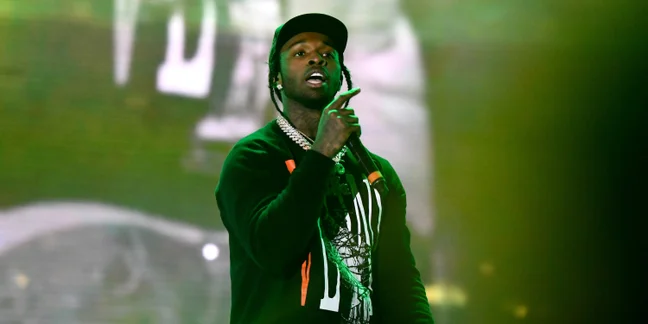Reviews

- My Morning Jacket
The Waterfall II
When they recorded 2015’s late-career highlight The Waterfall, MMJ wrote enough material for two albums. If the original was about conflict, the new volume concerns the healing that comes after.
- Kacy Hill
Is It Selfish If We Talk About Me Again
The singer and former G.O.O.D. Music signee returns with a palette of adult contemporary synth-pop and early-’10s R&B. It’s bright and open, built with sounds that move and breathe with the artist.
- patten
GLOW
Working with a stripped-down palette of synthesizers and almost no drums, the UK producer reconnects with the fundamental sense of strangeness that runs through his best music.
- The Beths
Jump Rope Gazers
On their second LP, the New Zealand indie rockers downshift into a muted, sleeker sound, sacrificing some of the energy that made their debut special.
The Latest
Moses Sumney Shares New Song “Monumental”: Listen
- by: Quinn Moreland
Drake and DJ Khaled Releasing 2 New Songs This Week
- by: Matthew Ismael Ruiz
Mariah Carey Announces Memoir The Meaning of Mariah Carey
- by: Sam Sodomsky
Pitchfork’s Newsletters
All of the jams, none of the spam.
Features & Videos
The Revolution Will Be TikTok’d
Listen to the the first episode of our new podcast, The Pitchfork Review
Lily Konigsberg Wants to Write the Catchiest Songs You’ve Ever Heard
In this Rising interview, the lifelong New Yorker and member of the art-punk trio Palberta talks about building up the confidence to release her first official solo record.
FINNEAS Demos How He Builds Songs for Billie Eilish
- by: Pitchfork
FINNEAS explores the sounds that sparked his greatest musical breakthroughs in this episode of “Critical Breakthroughs”
More Recent Reviews
- Pink Floyd
Meddle
Each Sunday, Pitchfork takes an in-depth look at a significant album from the past, and any record not in our archives is eligible. Today, we revisit Pink Floyd’s conflicted and brilliant album from 1971.
- Grateful Dead
Workingman’s Dead
Newly reissued with bonus material for its 50th anniversary, the Dead’s fourth album returned them to their folk-blues roots and transformed the trajectory of their career in the process.
- Roberto Carlos Lange
Kite Symphony, Four Variations
Lange, better known as Helado Negro, teams with the visual artist Kristi Sword for a sprawling and inspired project paying tribute to the Marfa, Texas sky.
- Model Home
One Year
The experimental D.C. duo’s latest album is made up of slabs of textured noise and decayed vocals, but they use their DIY chaos as a radical force against all hierarchies.


